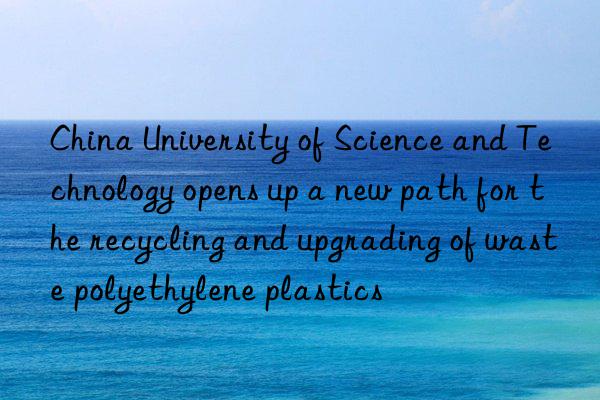
It is learned from the University of Science and Technology of China that Professor Zeng Jie of the Hefei National Research Center for Microscale Material Science has recently made breakthroughs in the field of plastic recycling upgrades.
The relevant research results were published in the internationally renowned academic journal Nature Nanotechnology on June 26.
Nowadays, people's life is inseparable from plastic, as small as a straw, as large as a car... Large-scale plastic production provides convenience for people, but it brings problems to nature, causing serious " White pollution".
Polyethylene is one of the five general-purpose plastics with a stable chemical structure and is difficult to degrade naturally. Therefore, it is of great significance to the sustainable development of human society to develop recycling and upgrading technology for waste polyethylene plastics, which can not only reduce its environmental pollution, but also allow it to regenerate economic value.
Polyethylene and petroleum have a similar chemical structure and composition, so can we use green catalytic conversion to treat waste polyethylene plastic as a "solid petroleum" raw material to process petroleum-based downstream chemical products?
Two processes in the petroleum industry have attracted the attention of researchers. One is the catalytic reforming of short-chain gasoline fractions to obtain higher value-added cyclic hydrocarbons, which will generate hydrogen; the other is the hydrocracking of heavy oil to produce short-chain hydrocarbons, which will consume hydrogen.
Inspired by these two processes, the researchers designed a "hydrogen breathing" strategy to degrade high-density polyethylene plastics, and developed a molecular sieve-supported metal ruthenium catalyst (Ru/HZSM-5), which can Let the plastic dehydrogenate into cyclic hydrocarbons, "exhale" hydrogen, and let the plastic "inhale" the hydrogen released by itself, and crack it into short-chain hydrocarbons.
Without the need for additional hydrogen or solvents, the researchers achieved a cycle upgrade of high-density polyethylene plastics to cyclic hydrocarbons. Subsequently, the researchers explored the cyclic upgrading reaction pathway of high-density polyethylene plastic. And the metal ruthenium supported by different molecular sieves was used to carry out the catalytic experiment of high-density polyethylene plastic cycle upgrading, and the influence of molecular sieve channels on the reaction was investigated. After three rounds of catalytic reactions and related experimental results, the Ru/HZSM-5 catalyst has certain universality to different types of polyethylene plastics.



 微信扫一扫打赏
微信扫一扫打赏
